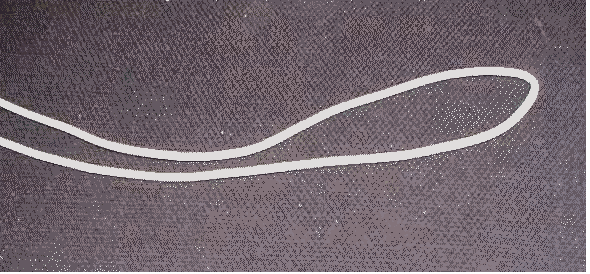

|
Simple
is best
|
| Tying hooks |
There are two main ways you can tie a hook, the difficult way and the easy way.The only thing you need to remember is that a knot weakens the line by pinching a neck. |
|
|
Simple knot - Best used as a general line to hook knot, simple fast and easy to tie. Just pass the line through the eye of the hook, spin the hook to twist the line, pass the line back through the loop formed by the eye, lubricate the twist and pull the hook, main line and line end. This tightens to form a grip on the line. The minimum pinching of the line is achieved. |
 |
|
|
Complex knot - If you must go for big line thickness, say on a wrecking trip, then pass a loop of line through the eye of the hook, then wrap the line round the shank of the hook tightly. I pass the free end of the line through the loop and slowly pull the loop tight using the main line. trouble is the tighter the line is pulled the weaker the line will get. |
 |
|
| Terminal tackle |
A lot of people make me smile, they put pounds and pounds worth of terminal tackle and bang it out. Multiple rigs require paternosters and beads and all sorts of junk Just think what that will be doing at the end of the line, it will lie flat on the bottom unless you are fishing directly down. This defeats the object a little. I use a simple set up, then if I need the bait off the bottom I put a small piece of polystyrene on the line by the bait to float it up. This keeps it out of the reach of crabs and get it into the feeding zone. |
Click to see a large version |
| Terminal branch knot | A simple loop tied in the shock leader, |  |
|
Tides - Think like a fish!
|
I like to think out why you can catch fish only at a certain time of the day and a certain time of the tide. An example - There lives a little French man in Beaumaris who would wander onto the pier at just a specific time of day and tide, with a particular bait, spend ten mins fishing and walk off with two flatties the size of dustbin lids. This is not my idea of fun, but it kept him happy. Most people will leave the fly cellars in winter at high tide, It is after high tide when the fun starts. Think of it this way - Predators are bigger (usually) than prey and don't swim as fast nor are they as agile. So if they are chasing after a prey fish with the strong tide, they use a lot of energy and the kill rate drops . However, if the predator is moving slowly against the tide, their prey is being forced towards them, the situation has now changed for the prey, the tide is going down, it is pinned between the reducing water level and danger. They move with the tide and bang out pops a predator. To get away it can either swim into the wall of predators or it can turn and flee into shallow water which in itself is a serious problem. In turning to run, it wastes the little time it has left, and leaves itself itself open to the rush attack from the predator. So when is the best time to catch fast predators, tide down. Some fish like conger are after shell fish, people may laugh, but you dive on a wreck and look what is clustered around the conger bolt hole? bits of crab and lobster. So they hunt mainly at slack tide, crabs and lobsters don't like a fierce water flow.
So pick your fish, look at what they say it eats, think about the water you are fishing in. Look at currents, look at the water flow. Think like a fish, where would you hunt? |
|
|
|
||
STILL UNDER CONSTRUCTION
